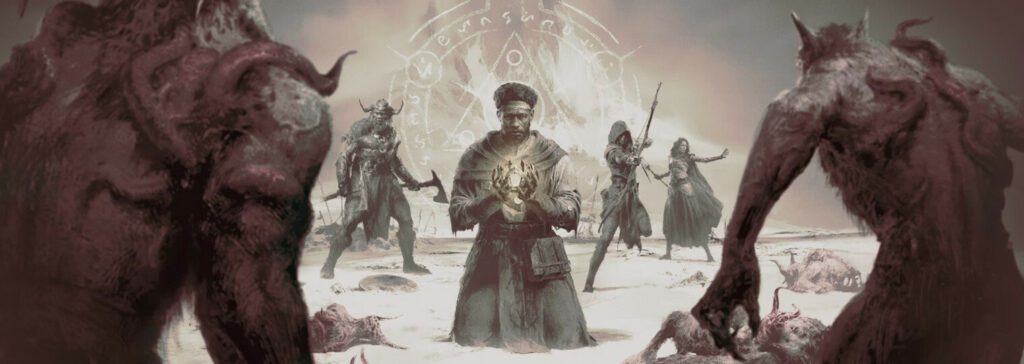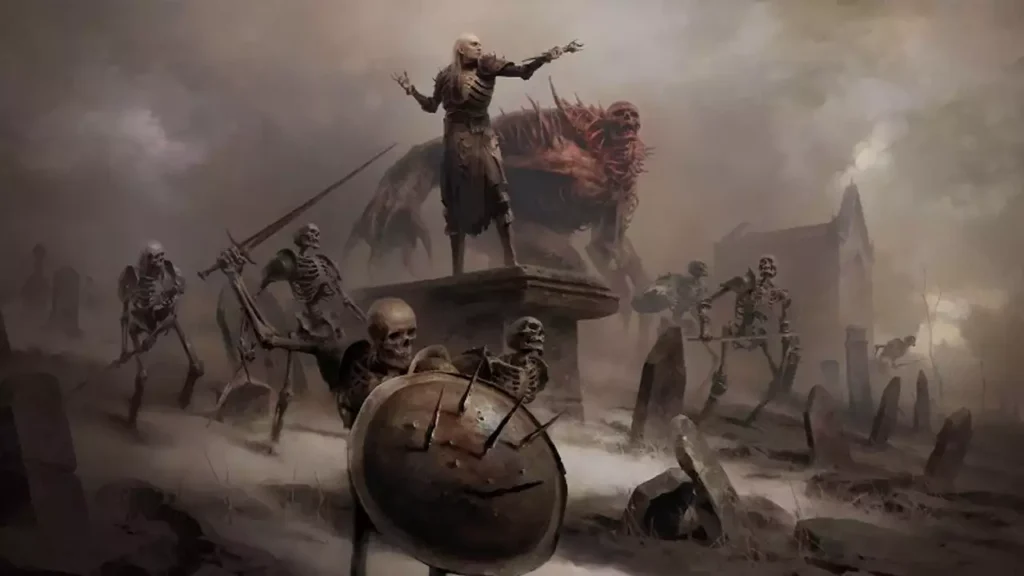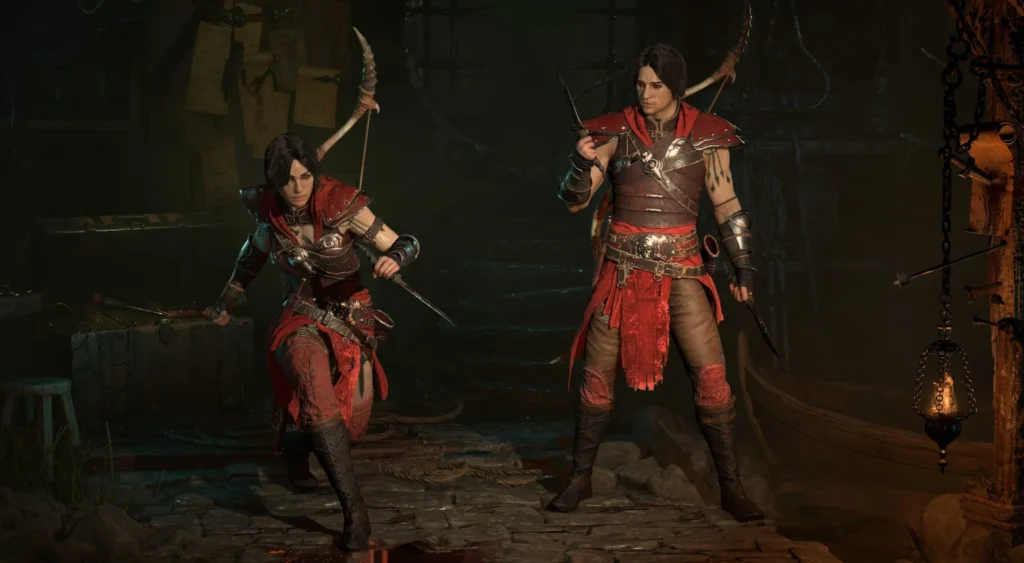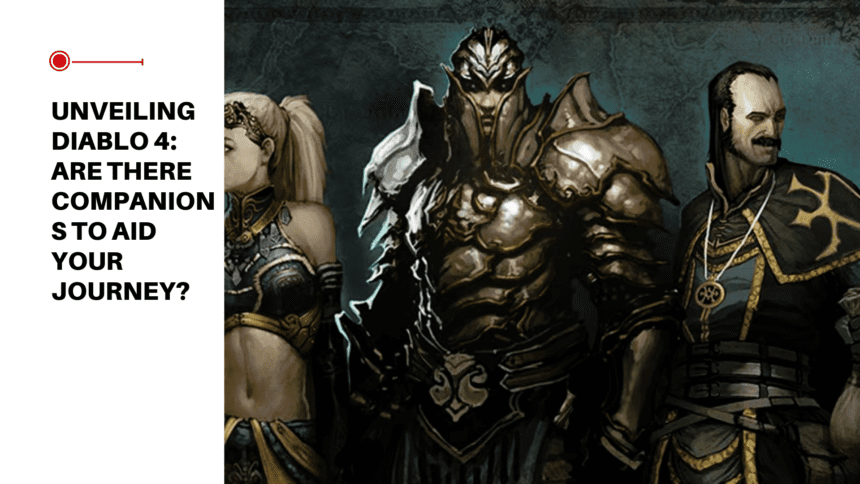Are there companions in Diablo 4? Well, brace yourself fellow demon slayers, because Diablo 4 is about to take companionship to a whole new level! In this blog post, we’ll delve into the role of companions throughout the beloved Diablo franchise and explore the exciting changes coming our way in Diablo 4. So grab your sword, stock up on potions, and prepare for a journey filled with dark dungeons, epic battles, and of course, some trusty companions by your side. Let’s dive in!
The Role of Companions in Diablo’s Franchise

diablo IV
Companions, whether they are gritty mercenaries or devoted followers, have always acted as an integral part of the Diablo series’ immersive gaming experience. They not only add a strategic layer to the gameplay but also drive the narrative, making the game world more dynamic and alive.
In the earlier Diablo games, players were given the opportunity to hire mercenaries to assist them in their epic quests. Introduced initially in Diablo 2, these mercenaries served as loyal hired hands who fought alongside you, braving the darkest dungeons and battling formidable foes. Players had the freedom to enlist mercenaries from each town they visited, each offering a unique selection of hardened warriors equipped with their own set of weapons and armor.
“Ever since we summoned our first Golem from a spellbook in Diablo 1, it’s been fun to fight alongside AI companions in the series.”
Building on this concept, Diablo 3 replaced mercenaries with a more complex and immersive follower system. These weren’t just hired hands; these were full-time companions, each with a unique storyline, abilities, and fighting style. From the steadfast Templar to the quick-witted Scoundrel and the enigmatic Enchantress, every follower added a new dimension to the game, enriching the player’s journey through the game’s vast landscapes.
With the anticipation of Diablo 4 mounting, the question on every player’s mind is: Will there be a similar system of companions in the franchise’s latest installment?
Companions in Diablo 4: A Different Approach

diablo IV
As the curtains lift to reveal the grandeur of Diablo 4, the largest and most ambitious game in the franchise, players are greeted with an array of compelling features. From the adrenaline-pumping experience of riding mounts to the prestige of amassing Renown, the intricate process of character creation, and the aesthetic appeal of transmogrification – Diablo 4 is a treasure trove of gaming delights. However, amidst all these thrilling advancements, one question lingers – are there companions in Diablo 4?
The answer to this query, as it turns out, is not as straightforward as one might expect. Unlike its predecessors, Diablo 4 does not employ a traditional follower or mercenaries system. Instead, it takes a fresh and narrative-driven approach to the concept of companionship. In Diablo 4, followers become central figures during key plot events, their presence and actions conveying a rich tapestry of storyline quests. This integral role of companion characters marks a significant departure from the strategic depth offered by the familiar systems of Diablo 2 and 3.
But why this shift in perspective? The answer lies in the game’s intention to foster a more interactive and cooperative gaming environment. Diablo 4 nudges players away from the solitary dependence on NPC companions and towards forming alliances with other heroes. This new emphasis on co-op gameplay strengthens the multiplayer experience, creating a sense of camaraderie and shared adventure among players.
However, this doesn’t mean that the follower system is gone for good. Given the ever-evolving nature of the Diablo series, there’s room for the return of followers, albeit in a modified form that aligns with the narrative and gameplay approach of Diablo 4.
As players dive deeper into the world of Diablo 4, they will find that companionship takes on a new dimension. It’s no longer just about strategic battles, but also about shared stories, unexpected alliances, and the thrill of navigating a complex world together.
Diablo 4’s Darker Mood and the Role of Companions

diablo IV
Enter the world of Diablo 4, a realm meticulously crafted to exude a more ominous and desolate ambiance. It is a game that trades the conventional light-hearted companionship for a more profound, immersive experience. This design choice, a marked departure from the previous titles in the franchise, manifests the developers’ intent to transport players into an atmospheric reality teeming with shadows and uncertainties.
The role of companions in Diablo 4 takes a different turn. Rather than being a source of witty banter and camaraderie, the game’s design leans towards maintaining a consistent, grim atmosphere. The reintroduction of companions, especially with their characteristic light-hearted interactions, might disrupt this meticulously crafted mood. This approach signifies a significant shift in the game’s design philosophy, with the developers opting for an immersive solitary journey over the banter-filled camaraderie of past games. If you like this post also find out are bosses unstoppable in Diablo 4.
However, it’s essential to note that companionship in Diablo 4 is not entirely absent. Instead, it has been reimagined to align with the game’s darker ethos. While the conventional followers may not be present, the game fosters a unique form of companionship, emphasizing shared stories and cooperative journeys with other players. This shift in focus reflects the game’s intent to promote a shared gaming experience, a departure from the past reliance on NPC companions.
In the enigmatic world of Diablo 4, camaraderie takes on a new form, weaving together the solitary paths of heroes into a shared journey. This approach adds depth to the game, creating an engaging multiplayer environment where players can forge alliances and navigate the treacherous world of Sanctuary together.
Companions in Diablo 2: Mercenaries
Companions have always been a vital part of the Diablo universe, and in Diablo 2, they took the form of mercenaries. These formidable allies were not just added firepower; they were a strategic asset, an extension of the player’s abilities. Each player had the option to enlist mercenaries, arming them with weapons and armor, thus shaping them into formidable allies in the fierce battles within the game’s dark world.
Adding an intriguing layer of strategy to the gameplay was the unique selection of mercenaries available for hire in each town. No two towns had the same mercenaries, encouraging players to explore and strategize, tailoring their team to suit their playstyle and class.
“Each town in Diablo 2 had a unique selection of mercenaries to hire, thus adding another layer of strategy to the gameplay.”
This strategic depth was further accentuated by the interaction between the player’s character class and the mercenaries’ combat abilities. Certain classes in Diablo 2 benefited more from specific mercenaries’ combat abilities. For instance, a Sorceress, primarily a spell-caster, would significantly benefit from a sturdy Barbarian mercenary. This Barbarian would engage enemies in close combat, creating the space and time for the Sorceress to channel her potent spells.
On the other hand, the melee-centric classes, like the Barbarian or Paladin, would find a mercenary with ranged or elemental support incredibly useful. These mercenaries could deal damage from afar or disrupt enemies with elemental effects, allowing the melee class to close the distance and engage enemies without taking substantial damage.
Thus, the mercenary system in Diablo 2 was more than just about companionship; it was about creating a symbiotic relationship, a tactical synergy between the player and the mercenaries. This dynamic offered players a variety of strategies to explore, making every playthrough a unique experience.
Companions in Diablo 3: Followers
With the dawn of Diablo 3, the game welcomed a fresh twist to companionship, bidding farewell to the mercenaries of Diablo 2 and introducing the concept of full-time companions aptly termed as followers. This dynamic trio of the Templar, Scoundrel, and Enchantress not only provided tactical support in the heat of the battle but were also intricately woven into the narrative fabric of the game.
Each follower brought with them, unique storylines, abilities, and fighting styles, adding a layer of intrigue and depth to the game’s narrative. Imagine crossing swords with the fiery and zealous Templar, trading wits with the roguish Scoundrel, or unlocking arcane secrets with the mysterious Enchantress. These interactions were far from monotonous, as each follower had unique dialogues when paired with different character classes, making each playthrough a different experience.
While the introduction of followers might seem like a mere narrative embellishment, it was a strategic move that added a new dimension to Diablo 3’s gameplay. Each follower possessed a distinct combat style that synergized with certain character classes, offering players a tactical advantage. This system encouraged players to strategize their game plan, choosing the companion that best complemented their playstyle and character class, bringing a sense of personalization to the fore.
For instance, if you played a class that lacked robust defensive abilities, the Templar, with his healing powers, could be your stalwart shield. On the other hand, the Scoundrel could provide the much-needed ranged support for close-combat classes, while the Enchantress could be an arcane powerhouse complementing classes with physical prowess.
By introducing followers, Diablo 3 managed to strike a balance between strategy and storytelling, enhancing the overall player experience. This unique blend of narrative depth and strategic gameplay is what made followers an integral part of Diablo 3, and is a feature that players fondly remember and associate with the game.
Companions in Diablo 4: What to Expect?
As the launch of Diablo 4 draws nearer, fans and avid gamers alike are filled with anticipation, speculating how the changes in the follower system will shape the gameplay and narrative progression. With the developers having honed long-standing features such as fast travel, potions, loot, skills, and character classes, it’s clear that the game is set to provide an enhanced experience. However, the conspicuous absence of a traditional companion system poses a compelling question – what role will companions play in the new installment?
Interestingly, Diablo 4 appears to be veering from established norms, placing a stronger emphasis on co-op gameplay and a darker, more immersive mood. This suggests a potential shift in the role of companions, underscoring the game’s commitment to delivering a different gaming experience. While the game encourages players to form alliances with other heroes, it’s worth pondering if the familiar follower system might return in a reimagined form.
Despite the uncertainty, followers continue to hold a distinctive role in Diablo 4. They are no longer mere tactical aids; instead, they have evolved into central characters during crucial plot events. The game cleverly integrates several storyline quests featuring one or more companion characters, adding a layer of depth to the narrative.
Yet, it’s clear that this new implementation lacks the strategic depth that was so intrinsic to Diablo 3. Many fans are eagerly awaiting to see if similar strategic elements will surface in Diablo 4, allowing them to leverage companions to augment their playstyle. If you liked this post also check out our blog and read all about can PS5 and PC unite in Diablo 4.
Despite the changes, the air of excitement surrounding Diablo 4 remains undiminished. The game’s different approach to companions, coupled with the possibility of a modified follower system in the future, leaves room for speculation. As we edge closer to the game’s release, one thing is certain – the next chapter in this beloved franchise promises to be an exhilarating journey for every player.







